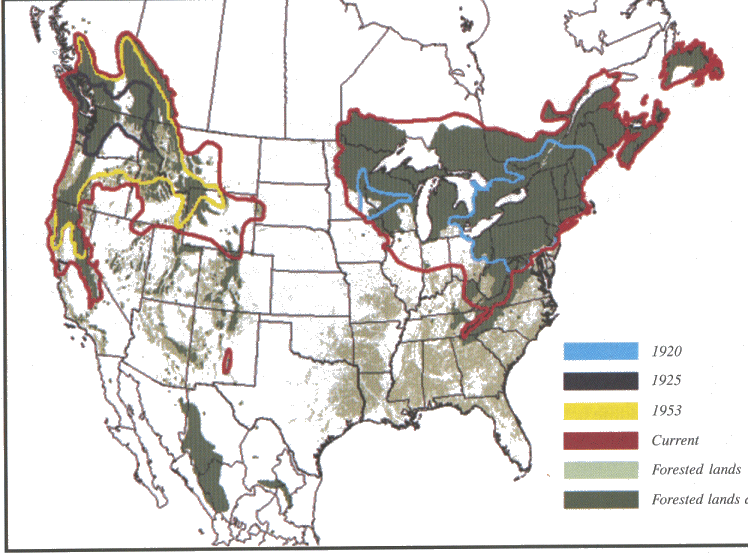By Faith Campbell, Emeritus environmental advocate and tree-pest expert
My previous blogs examined the risk to American forests from insects introduced by traveling on crates, pallets and other forms of wood packaging material (WPM). A second pathway for the introduction of tree-killing insects and disease pathogens is imports of live plants. Close to two-thirds of 91 pests now ravaging our wildland and urban forests probably entered on live plants.1

While many of these pests entered the U.S. before our government adopted plant pest statutes, introductions have continued in more recent years.
Among the trees severely depleted by these insects and diseases are American chestnut, whitebark pine and other high-elevation five-needle pines, Port-Orford-cedar, butternut, eastern and Carolina hemlocks, Fraser fir, and cycads found on Guam. Sudden oak death has killed well over a million trees, especially tanoaks, but also coast live oaks, California black oaks, canyon live oaks and Shreve’s oaks.
The risk that new insects or pests will be introduced on imported plants continues. While no one has conducted a thorough analysis to determine what proportion of imported plants is carrying a pest, in one study that looked at some of the data, approximately 12 percent of incoming living plant shipments had reportable pests. This translates to a pest “approach rate” more than 100 times greater than that for WPM.2

Americans import probably 3 to 4 billion plants per year. These plants come in a wide variety of types — ranging from embryonic tissues that were cultured in test tubes to plant bulbs to whole plants. The risk of pest introduction is higher for larger plants, and those that bear roots, bark, buds or even leaves.
One trend is encouraging: A growing proportion of plant imports are cuttings and slips, which are less likely to be transporting pests. In recent years, the U.S. imported more than 75 million cuttings, while another 154 million bulbs are imported.3 Bulb imports can carry pests that attack other bulb plants, but are unlikely to carry pests that threaten trees and shrubs.
Still, we imported nearly 29 million shrubs and trees — the types of plants most likely to transport pests that could attack our trees.
Stay tuned as I go more in-depth about plant imports and their role in tree pest and pathogen outbreaks in the U.S.
1Liebhold, A.M., E.G. Brockerhoff, L.J. Garrett, J.L. Parke, and K.O. Britton. 2012. Live plant imports: the major pathway for forest insect and pathogen invasions of the US. Frontiers in Ecology and the Environment 10(3): 135-143. Accessed December 7, 2012.
2Liebhold, A.M., E.G. Brockerhoff, L.J. Garrett, J.L. Parke, and K.O. Britton. 2012. Live plant imports: the major pathway for forest insect and pathogen invasions of the US. Frontiers in Ecology and the Environment 10(3): 135-143. Accessed December 7, 2012.
3Data on import volumes of particular types of plants were provided by Manuel Colunga.